Wood height 26in (66cm) Provenance: French Private Collection Acquired from the above by the present owner Holding an offering bowl for kola nuts, possibly from the Western Grassfields, Northwest Province. An in situ photo of this figure was illustrated in the catalog to the exhibition, "The Art of Cameroon," created by the Smithsonian Institution's Traveling Exhibition Service (SITES). The show highlighted a collection of masks, figures and stools representing the power and prestige of Cameroon royalty. The exhibition traveled from February 6 – March 31, 1993, to the following venues: National Museum of Natural History, Smithsonian Institution, Washington, DC, The New Orleans Museum of Art, The Houston Museum of Fine Arts, The Field Museum of Natural History, Chicago and the American Museum of Natural History, New York. It is listed in the catalog on page 34: "This male bowl figure is in the palace of Oku. Photographed by the author, 1976". (Northern, Tamara. 1984. "The Art of Cameroon." Washington, DC: Smithsonian Institution.) Similar offering bowls can be found in the following publications: Bravmann, René (1970), West African Sculpture. Henry Art Gallery, Seattle and London: University of Washington Press. (Cover image; figure 128) Gebauer, Paul, The Art of Cameroon, "African Arts", Winter 1971, pp. 24-35, 80. (Figure 23, p. 30) Harter, Pierre. 1986, "Arts Anciens du Cameroun. Arnouville: Arts d'afrique Noire. Figure 277, p. 244. "Porteur de coupe fuwu collecté á Nyos par Ankermann. 1908. 55 cm [21.5"] (Dahlem Museum III C 24.952)." Robbins, Warren M. and Nancy Ingram Nooter. 1989. African Art in American Collections. Washington and London: Smithsonian Institution Press. Figure 1547, p. 561. "Ceremonial Bowl. Cameroon Grasslands/Wood, pigment/16-1/4" (41.3 cm) Buffalo Museum of Science." A large male bowl figure characterized by a powerful silhouette representing an ancestor figure comprised of a seated Fon, the priestly and political leader of his people, carrying a ceremonial kola nut bowl. Tamara Northern (1984:33-38), notes that, "the symbol of royal office par excellence is the stool, designated a throne when its scale and iconographic elaboration warrant. The seated posture symbolizes the confidence and security of command over support, literally and metaphysically, and as such it expresses an explicit privilege" (p. 33). Northern includes an in-situ photo, taken by herself of this figure in the palace of Oku (p. 34), as an example of the artistic manifestation of kingship in the form of a seated Fon. The male ancestor figure distinguishes himself as royal by his ceremonial attire and regalia including a prestige cap and colonial ankle boots, carrying a bowl used to hold kola nuts for the Fon and palace guests, a regalia of Fonship. A similar utilitarian figure identified as a kola nut receptacle, adorns the cover of René Bravmann's, West African Sculpture (1970). Bravmann notes, "the kola nut is found widely in the Cameroons grasslands, and kola nut containers are a utilitarian object belonging to chiefs throughout the region. The receptacle is lined with green leaves to keep the daily supply fresh and moist. A kneeling or squatting male figure holding a bowl is a common motif. Visitors to the chiefs' compounds are offered kola as a gesture and expression of good will and friendship." (p. 60) Also noteworthy is the spider icon on the back of the figure's stool. Tamara Northern notes that "the spider icon is more frequently manifest in prestige art than any other icon. Is representation on those types of prestige art customarily granted title-holders by the Fon ... may signal the spider's metaphoric link with all ancestors beyond the exclusive royal context."(p. 50) She further calls attention to the earth spider "as the divination animal throughout the Grassfields...household heads will frequently consult the spider to learn the outcome of an impending event...the spider has thus been interpreted as an animal of wi
Wood height 26in (66cm) Provenance: French Private Collection Acquired from the above by the present owner Holding an offering bowl for kola nuts, possibly from the Western Grassfields, Northwest Province. An in situ photo of this figure was illustrated in the catalog to the exhibition, "The Art of Cameroon," created by the Smithsonian Institution's Traveling Exhibition Service (SITES). The show highlighted a collection of masks, figures and stools representing the power and prestige of Cameroon royalty. The exhibition traveled from February 6 – March 31, 1993, to the following venues: National Museum of Natural History, Smithsonian Institution, Washington, DC, The New Orleans Museum of Art, The Houston Museum of Fine Arts, The Field Museum of Natural History, Chicago and the American Museum of Natural History, New York. It is listed in the catalog on page 34: "This male bowl figure is in the palace of Oku. Photographed by the author, 1976". (Northern, Tamara. 1984. "The Art of Cameroon." Washington, DC: Smithsonian Institution.) Similar offering bowls can be found in the following publications: Bravmann, René (1970), West African Sculpture. Henry Art Gallery, Seattle and London: University of Washington Press. (Cover image; figure 128) Gebauer, Paul, The Art of Cameroon, "African Arts", Winter 1971, pp. 24-35, 80. (Figure 23, p. 30) Harter, Pierre. 1986, "Arts Anciens du Cameroun. Arnouville: Arts d'afrique Noire. Figure 277, p. 244. "Porteur de coupe fuwu collecté á Nyos par Ankermann. 1908. 55 cm [21.5"] (Dahlem Museum III C 24.952)." Robbins, Warren M. and Nancy Ingram Nooter. 1989. African Art in American Collections. Washington and London: Smithsonian Institution Press. Figure 1547, p. 561. "Ceremonial Bowl. Cameroon Grasslands/Wood, pigment/16-1/4" (41.3 cm) Buffalo Museum of Science." A large male bowl figure characterized by a powerful silhouette representing an ancestor figure comprised of a seated Fon, the priestly and political leader of his people, carrying a ceremonial kola nut bowl. Tamara Northern (1984:33-38), notes that, "the symbol of royal office par excellence is the stool, designated a throne when its scale and iconographic elaboration warrant. The seated posture symbolizes the confidence and security of command over support, literally and metaphysically, and as such it expresses an explicit privilege" (p. 33). Northern includes an in-situ photo, taken by herself of this figure in the palace of Oku (p. 34), as an example of the artistic manifestation of kingship in the form of a seated Fon. The male ancestor figure distinguishes himself as royal by his ceremonial attire and regalia including a prestige cap and colonial ankle boots, carrying a bowl used to hold kola nuts for the Fon and palace guests, a regalia of Fonship. A similar utilitarian figure identified as a kola nut receptacle, adorns the cover of René Bravmann's, West African Sculpture (1970). Bravmann notes, "the kola nut is found widely in the Cameroons grasslands, and kola nut containers are a utilitarian object belonging to chiefs throughout the region. The receptacle is lined with green leaves to keep the daily supply fresh and moist. A kneeling or squatting male figure holding a bowl is a common motif. Visitors to the chiefs' compounds are offered kola as a gesture and expression of good will and friendship." (p. 60) Also noteworthy is the spider icon on the back of the figure's stool. Tamara Northern notes that "the spider icon is more frequently manifest in prestige art than any other icon. Is representation on those types of prestige art customarily granted title-holders by the Fon ... may signal the spider's metaphoric link with all ancestors beyond the exclusive royal context."(p. 50) She further calls attention to the earth spider "as the divination animal throughout the Grassfields...household heads will frequently consult the spider to learn the outcome of an impending event...the spider has thus been interpreted as an animal of wi

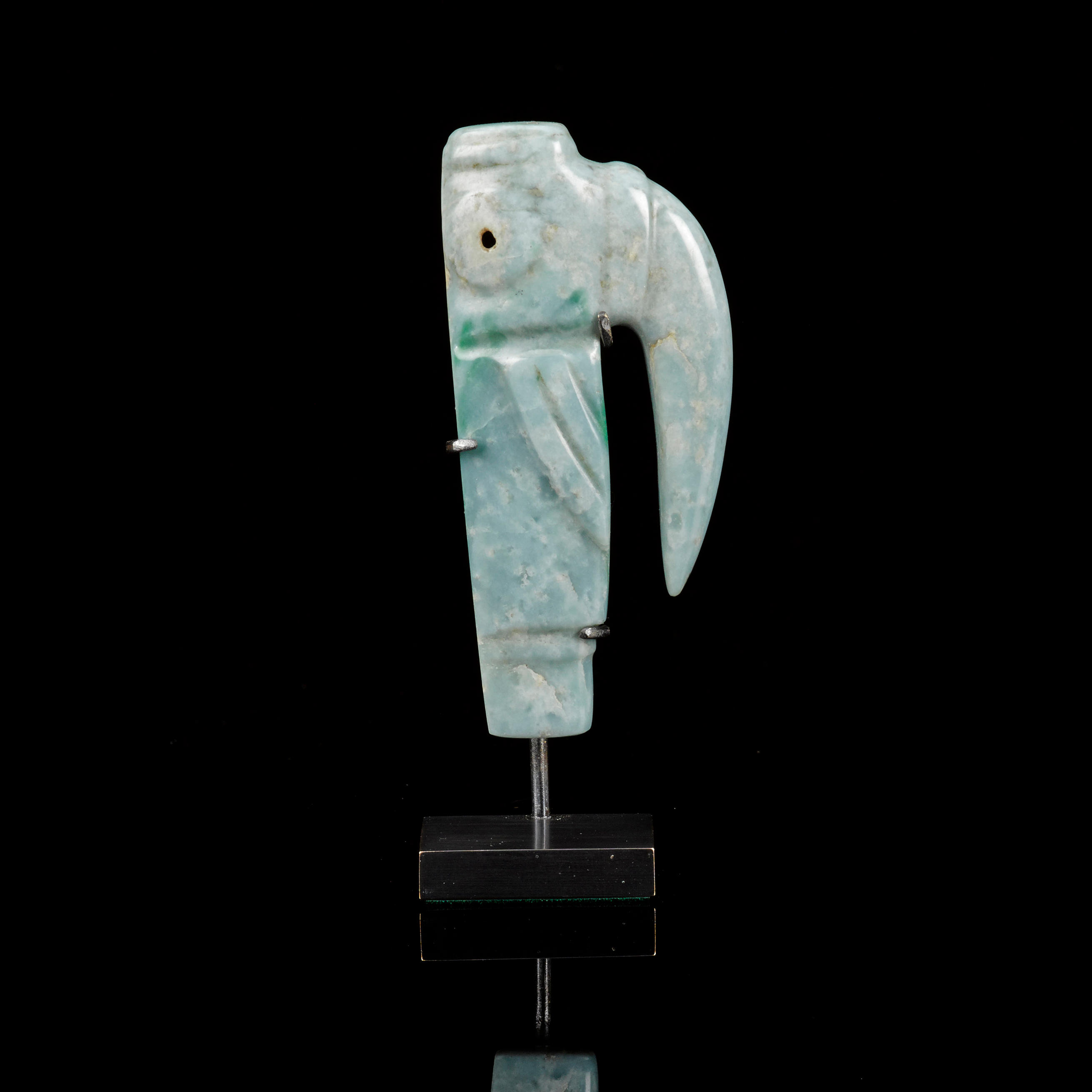

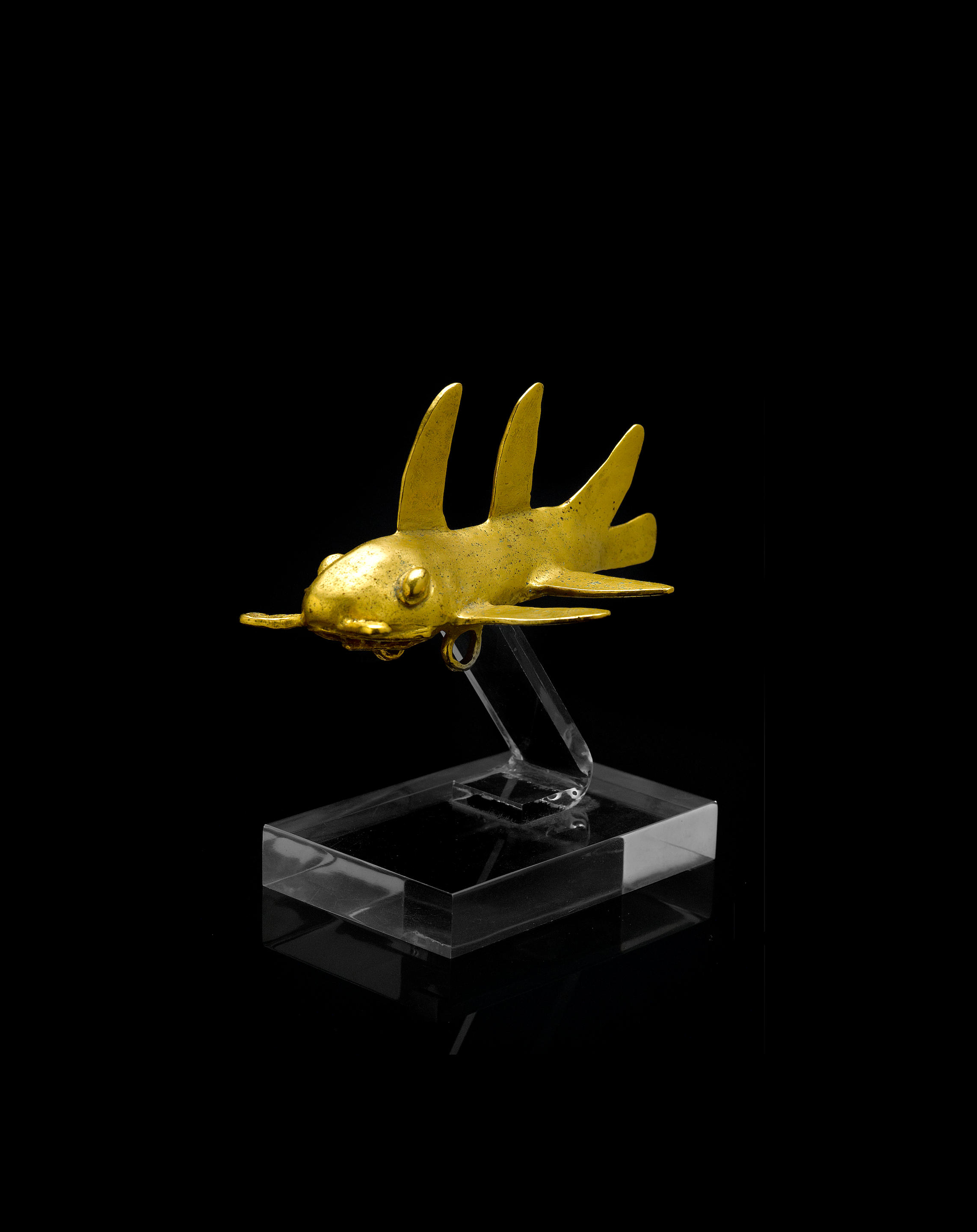
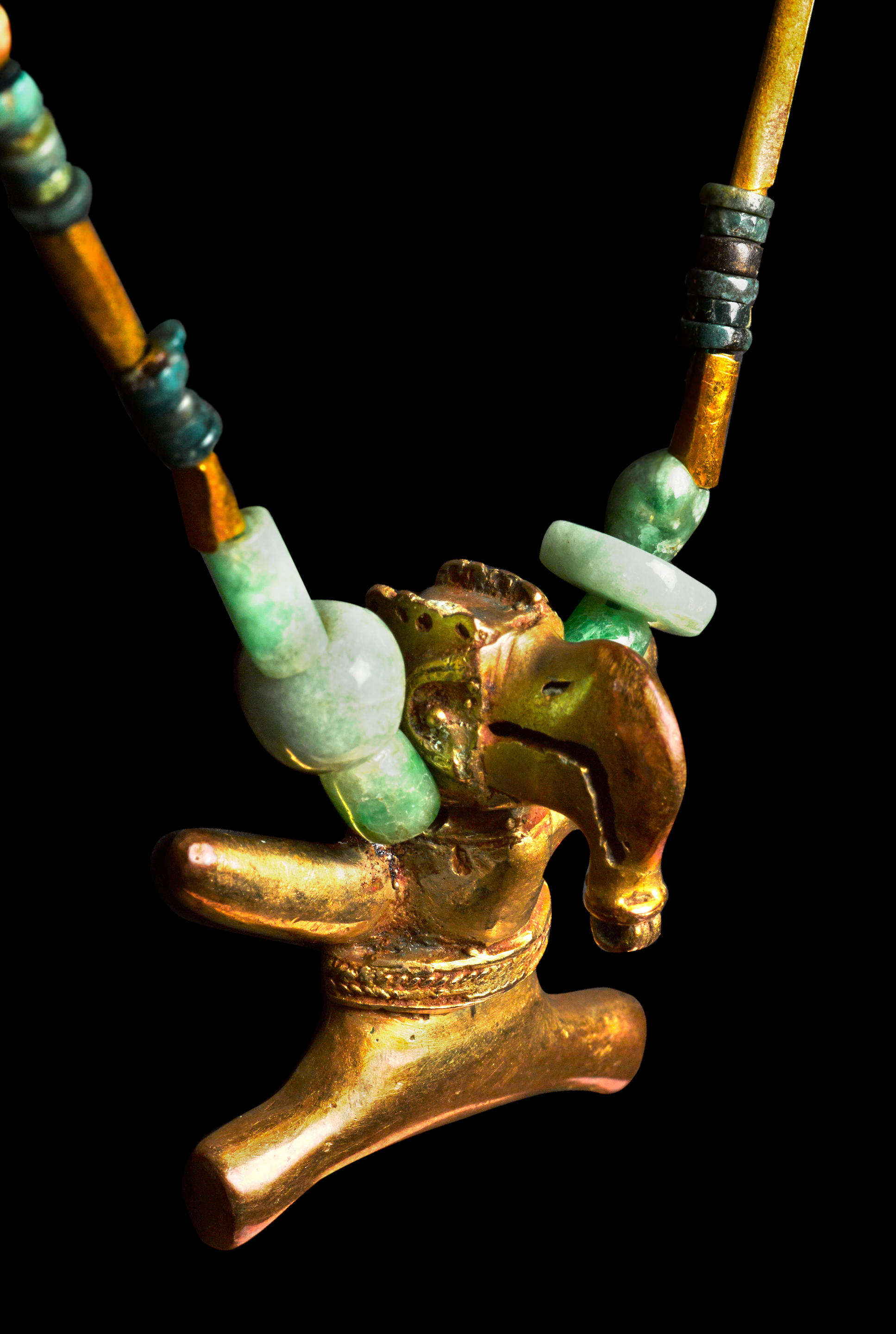
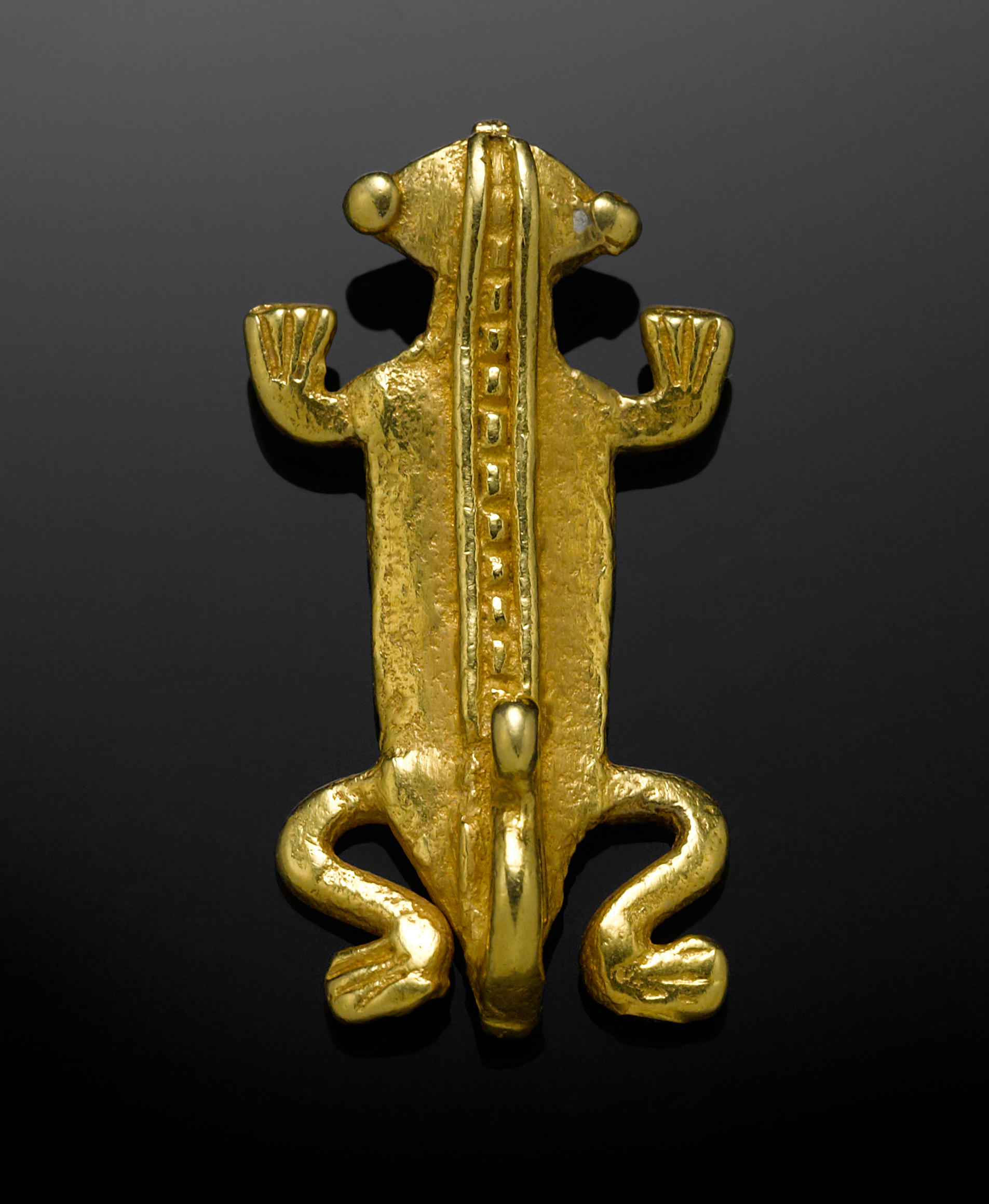

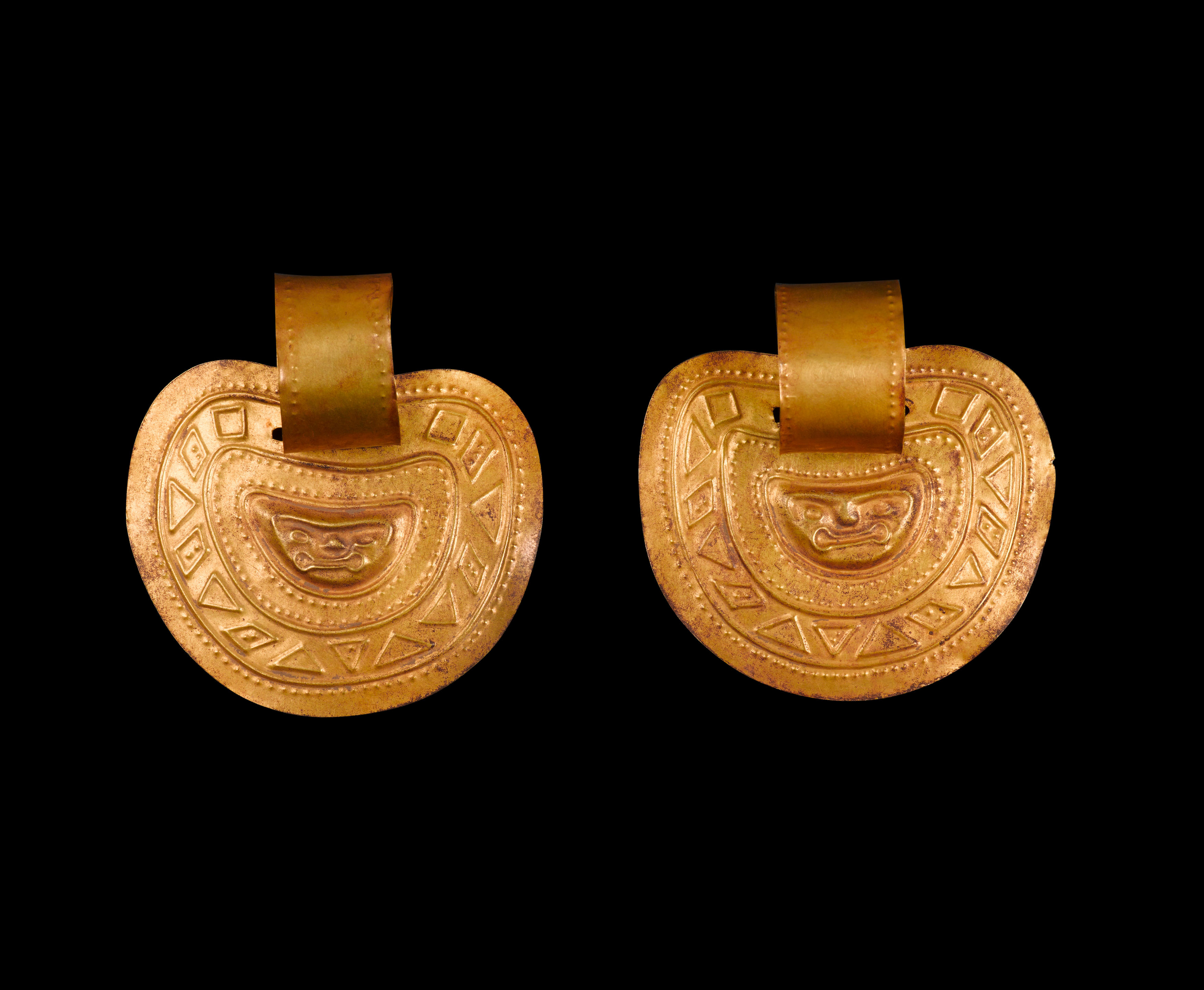
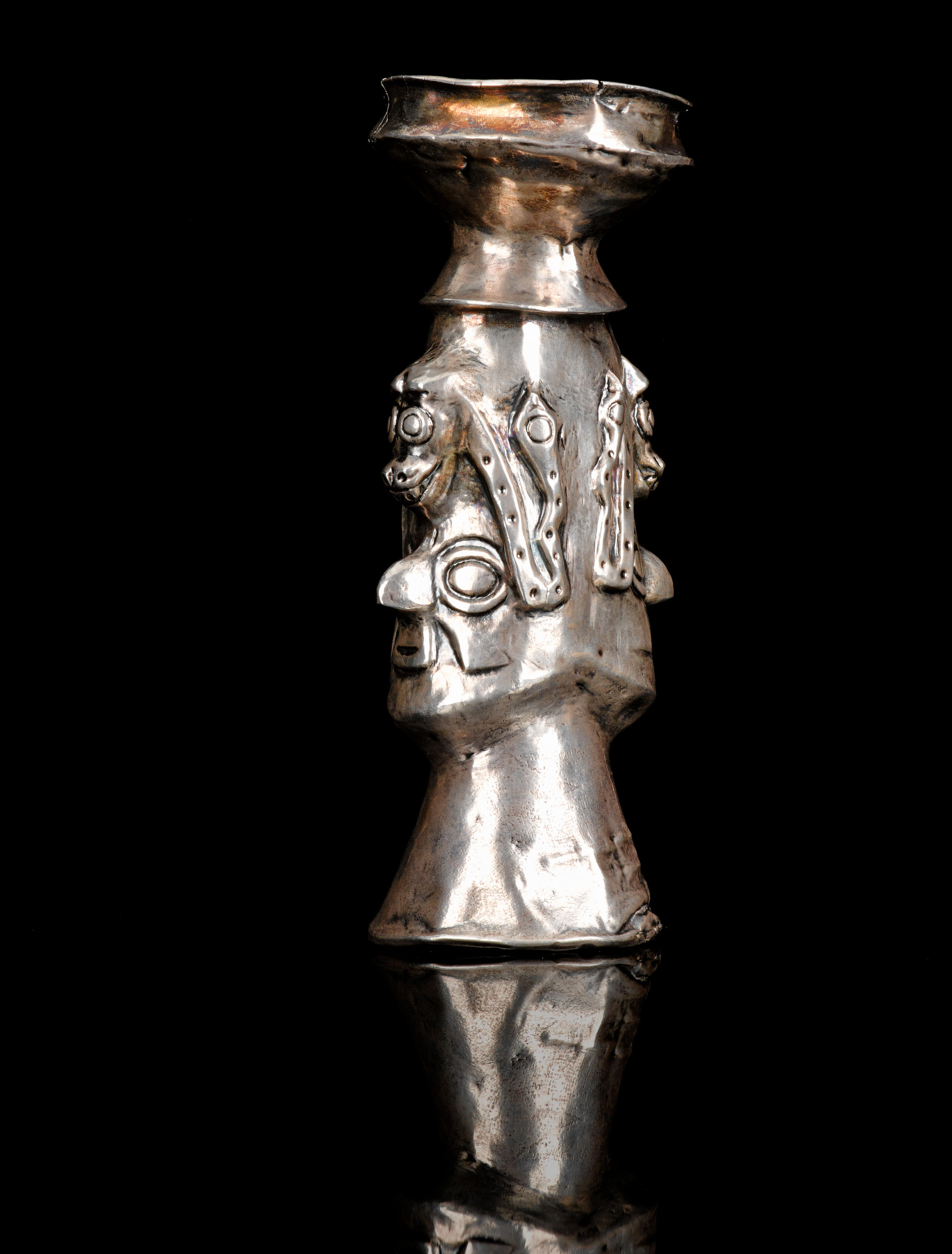
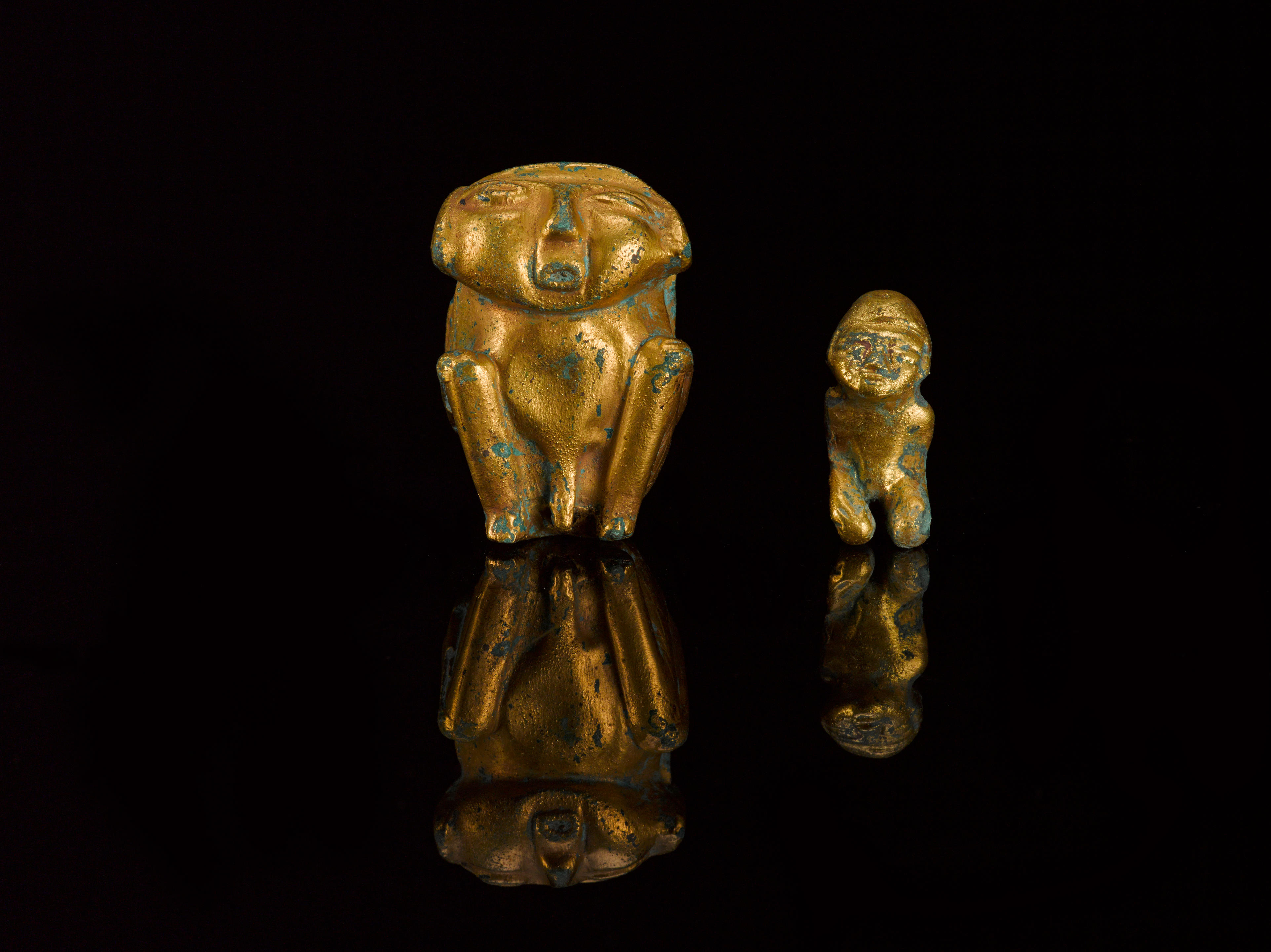
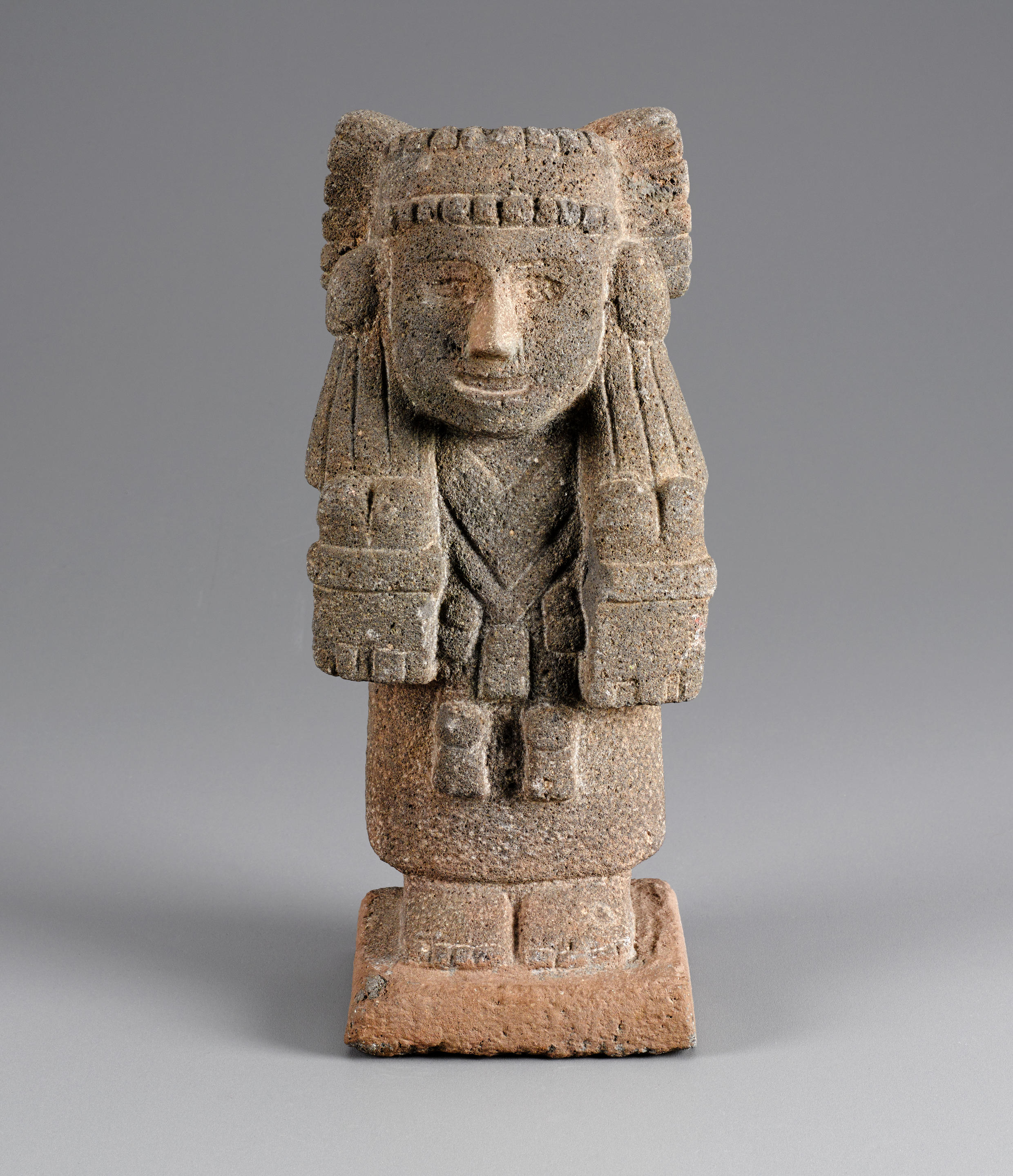
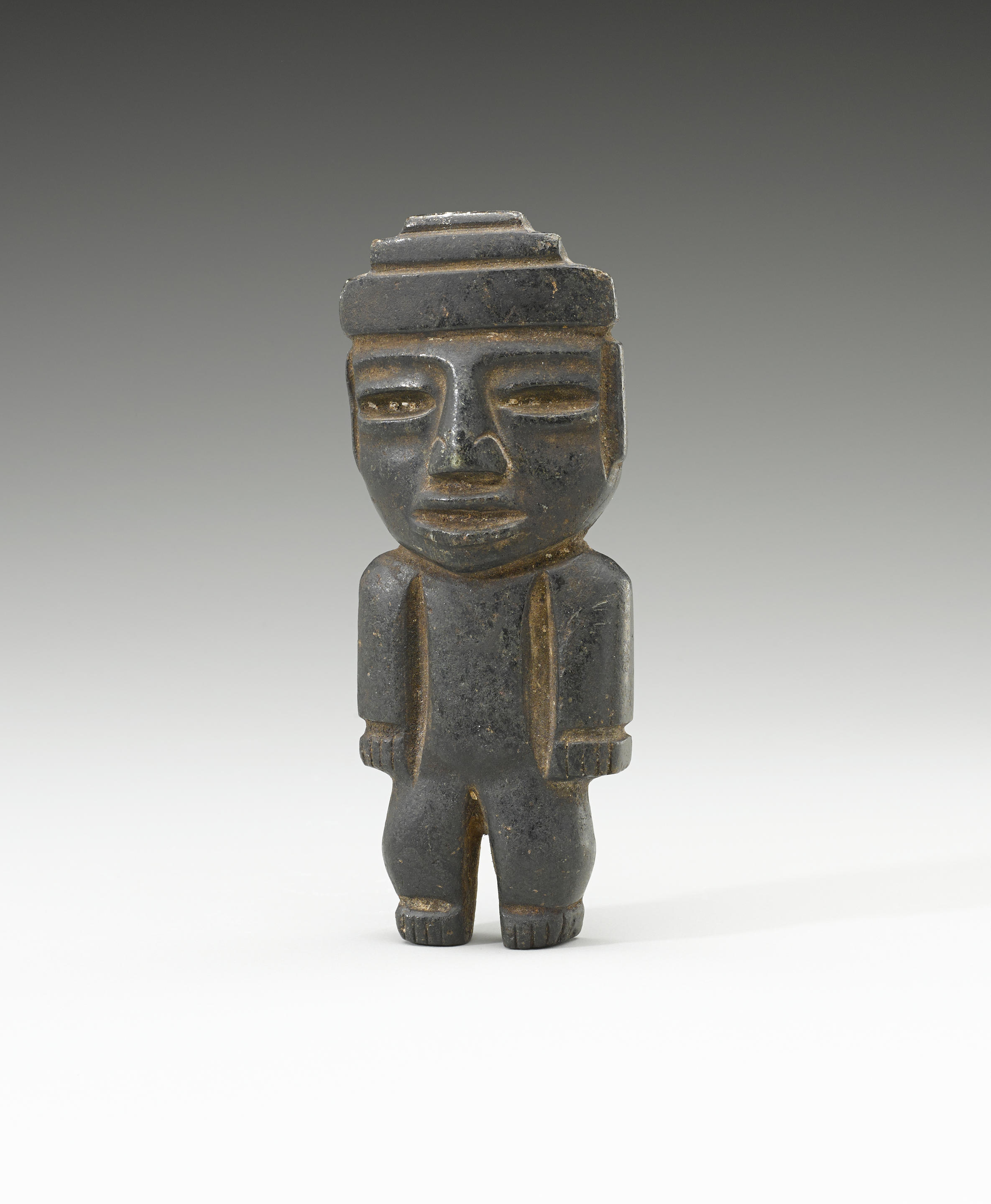
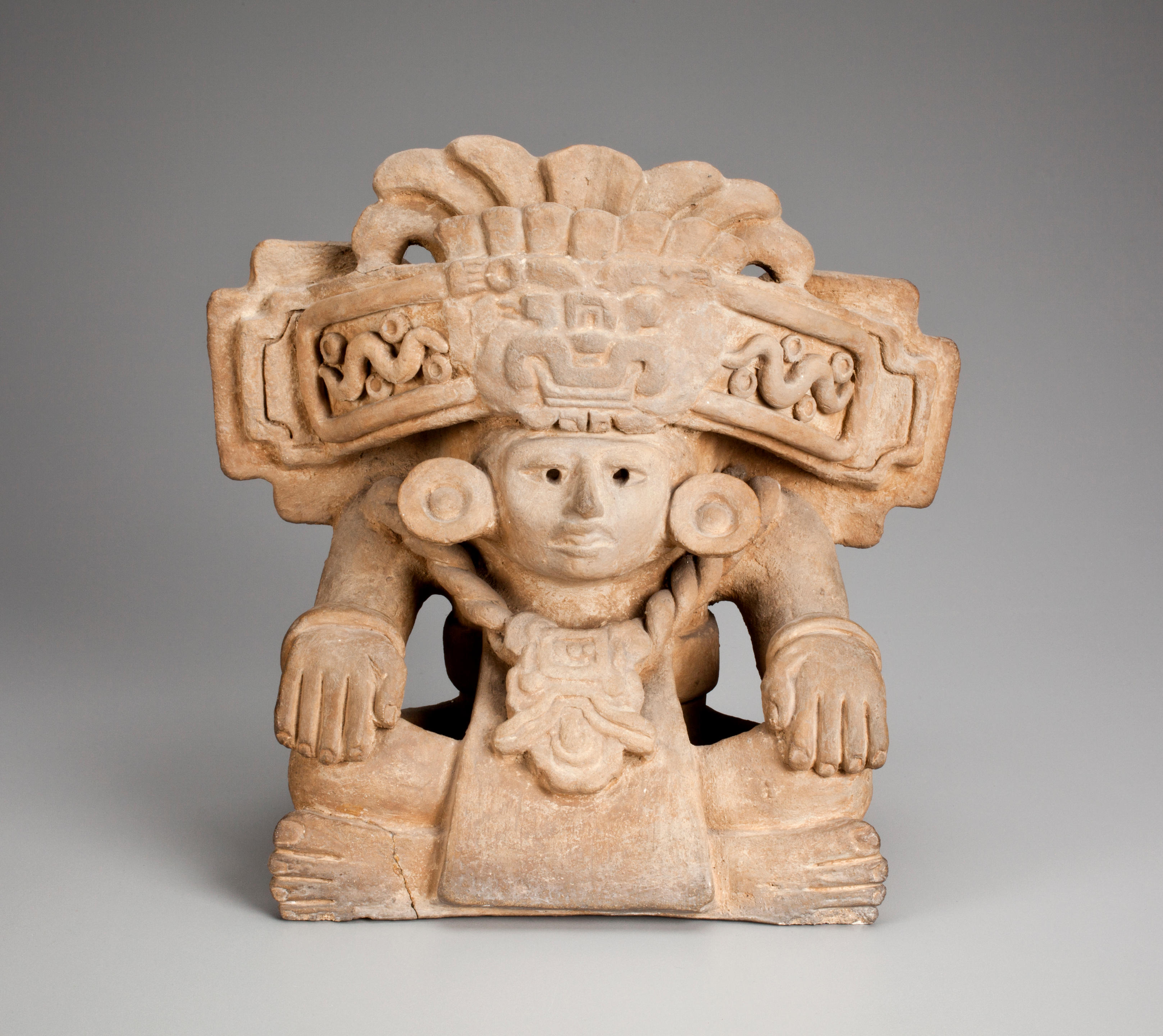
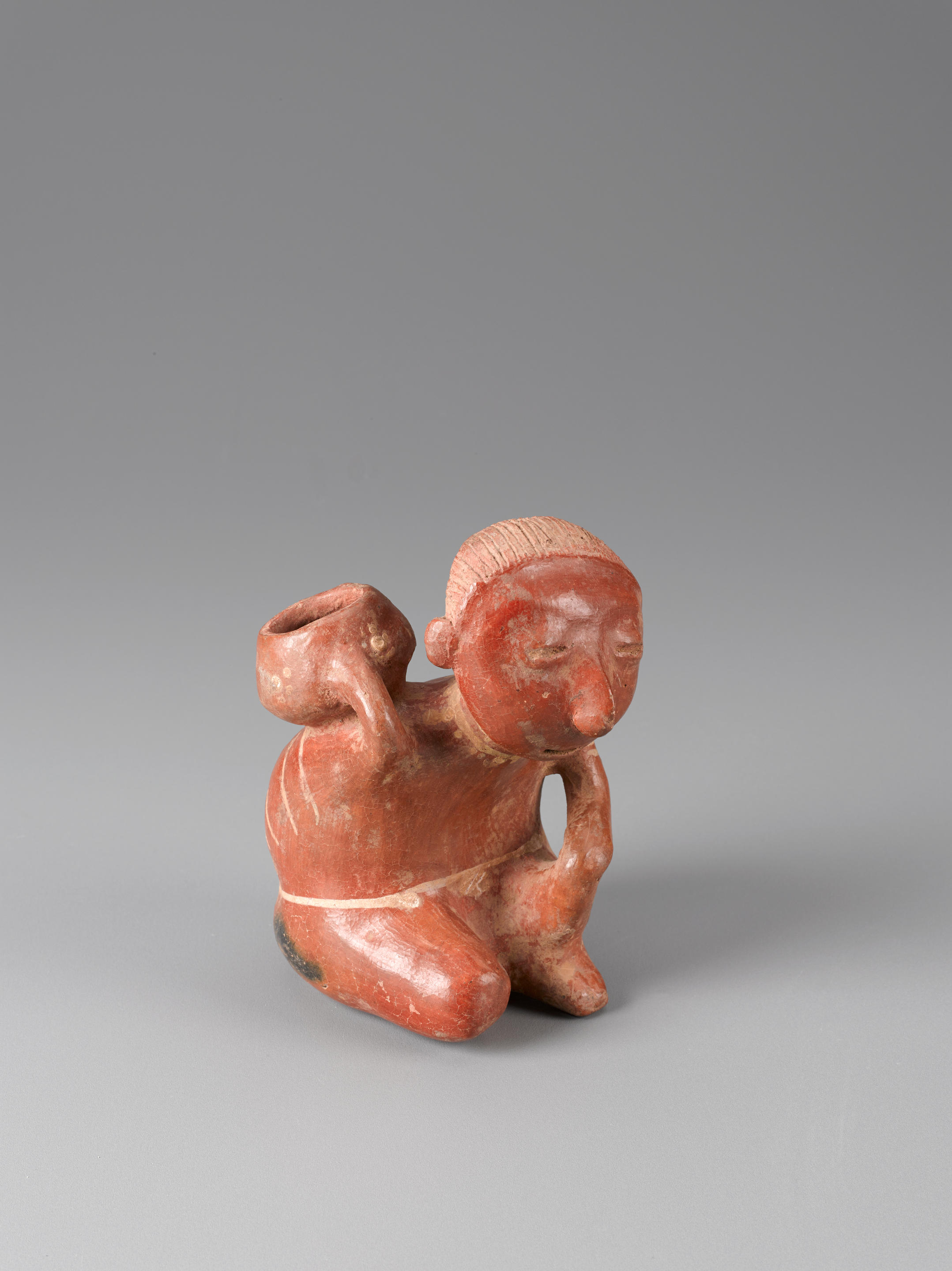
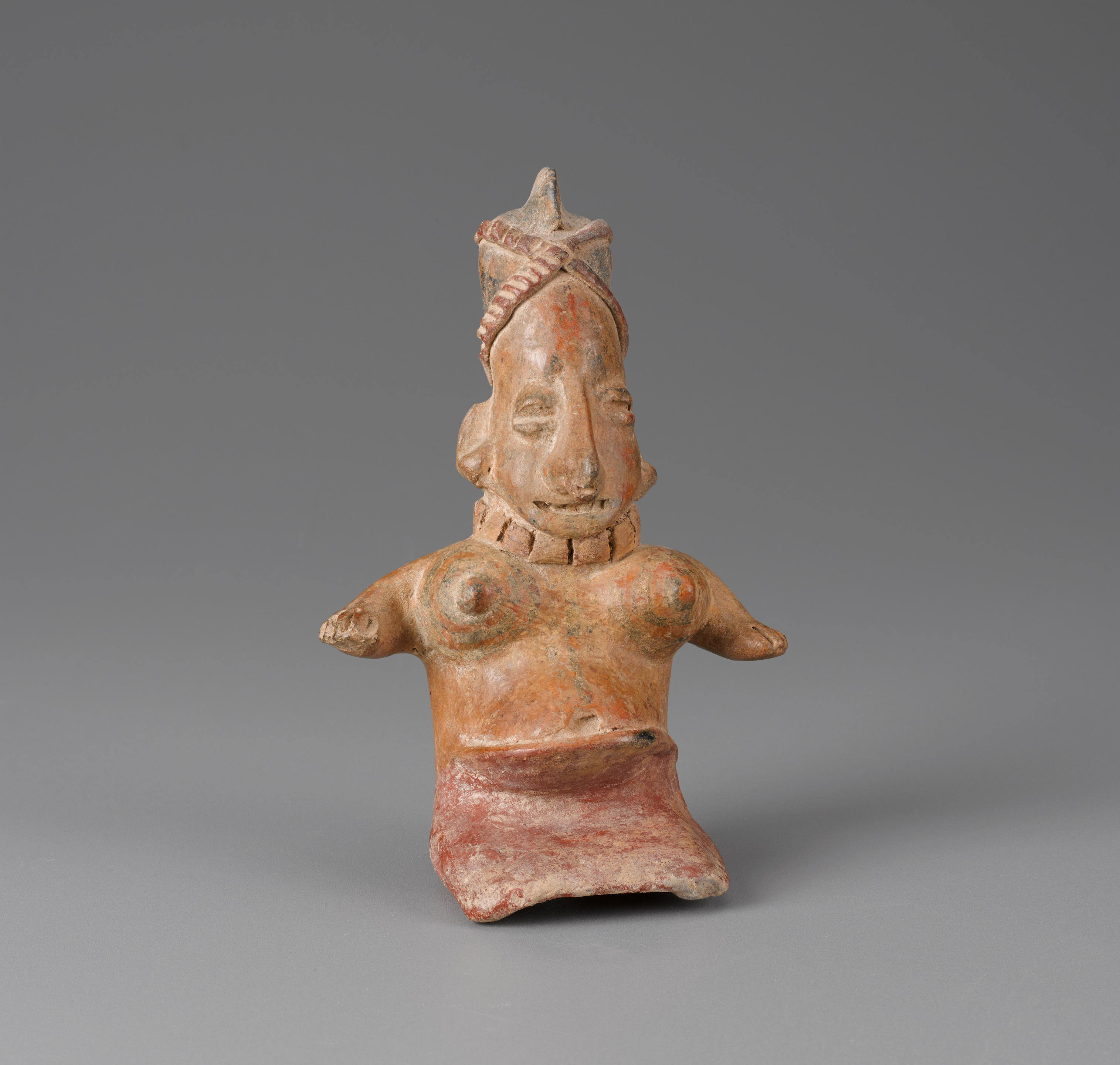
Testen Sie LotSearch und seine Premium-Features 7 Tage - ohne Kosten!
Lassen Sie sich automatisch über neue Objekte in kommenden Auktionen benachrichtigen.
Suchauftrag anlegen